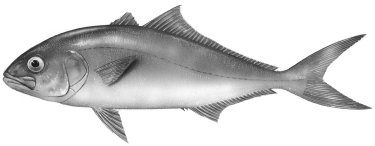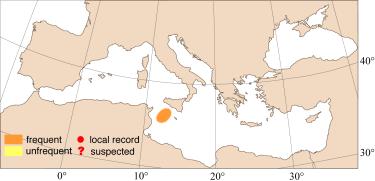
|
Relevant synonyms
Misidentification
Meristic formula
|
|
| drawing : Tuvia Kurz |
|
SHORT
DESCRIPTION
color : adults dark pink dorsally and laterally, darker on the head, and pale ventrally. Juveniles, smaller than 20 cm fork length, yellow with 5 dark body bars, irregular and broken, that do not extend onto membranes of soft dorsal and anal fins, and an sixth bar, small and dark, at end of caudal peduncle. size : in the Mediterranean, on average, 65 cm fork length. In the Atlantic to 55 cm fork length. |
DISTINGUISHING CHARACTERISTICS
BIOLOGY / ECOLOGY
habitat : juveniles epipelagic in oceanic or offshore neritic waters and adults benthopelagic, generally restricted to coastal waters over the continental shelf, from the surface to at least 200 m depth. |
|
1st
MEDITERRANEAN RECORD
|

|
|
DISTRIBUTION
|
ESTABLISHMENT SUCCESS
speculated reasons for success :
|
|
|
MODE OF
INTRODUCTION |
IMPORTANCE TO
HUMANS |
|
KEY
REFERENCES
|